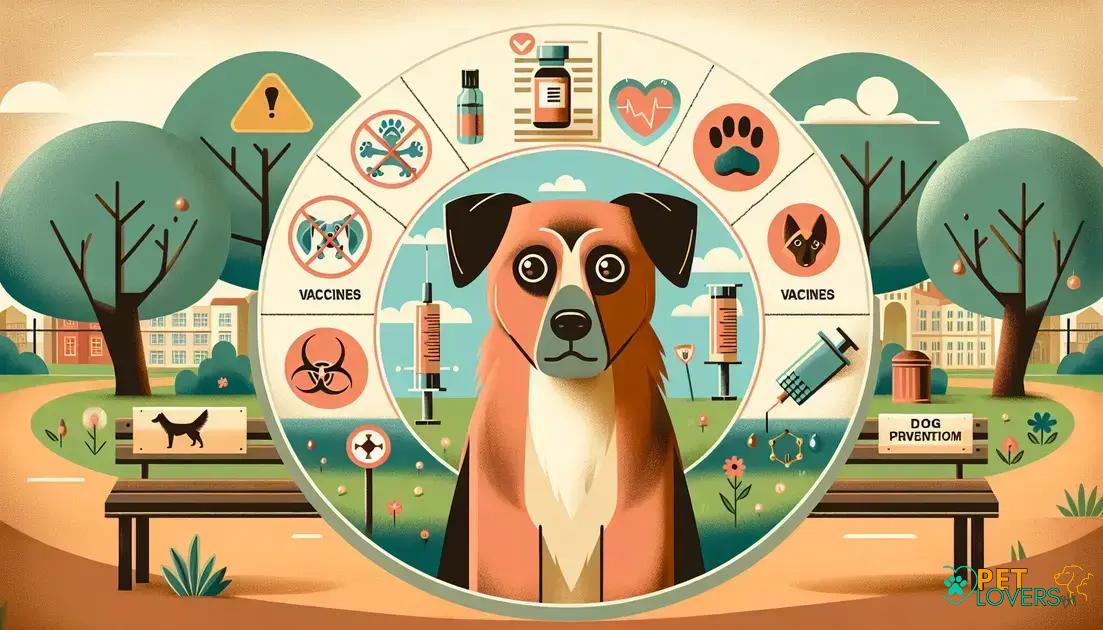Rabies in Dogs: The Silent Killer You Need to Know About
Rabies in dogs is a life-threatening disease that can have devastating consequences if left untreated.
With nearly 60,000 human deaths reported annually, it’s essential to understand the risks and prevention measures to keep you and your furry friends safe.
In this article, we’ll delve into the world of Rabies in dogs, exploring the symptoms, causes, and treatment options to ensure you’re equipped with the knowledge to protect your beloved pets.
Understanding Rabies in Dogs
Rabies in dogs is a viral disease that affects the central nervous system of dogs, causing inflammation of the brain and eventually leading to death. The virus is transmitted through the saliva of infected animals, typically through a bite.
Common carriers of the rabies virus include wildlife such as raccoons, bats, and skunks, as well as infected dogs. Once symptoms appear, the disease is almost always fatal, making early detection and treatment crucial.
In this section, we’ll explore the signs and symptoms of rabies in dogs, as well as the transmission and prevention methods.
Prevention and Treatment Options

Rabies prevention and treatment options are crucial in reducing the risk of transmission and saving lives.
Vaccination is the most effective method of preventing rabies in dogs. The rabies vaccine is typically administered in a series of shots, and booster shots are recommended annually.
In addition to vaccination,
proper wound care and prompt medical attention
are essential in preventing the spread of the virus.
If your dog is bitten or exposed to an infected animal, seek immediate veterinary care to administer post-exposure prophylaxis (PEP), which may include a series of shots and other medications.
In severe cases, the virus may have already progressed, and treatment may involve supportive care, such as medication to manage symptoms and improve quality of life.
What to Do If Your Dog Has Rabies
If your dog has been bitten or exposed to an animal with rabies, it’s essential to act quickly to prevent the transmission of the virus. Seek immediate veterinary care to administer post-exposure prophylaxis (PEP), which may include a series of shots and other medications.
In severe cases, the virus may have already progressed, and treatment may involve supportive care, such as medication to manage symptoms and improve quality of life.
In addition to medical treatment, it’s crucial to
isolate your dog
from other animals and humans to prevent further transmission.
With prompt and proper treatment, it’s possible to save your dog’s life and prevent the spread of the virus.
Conclusion: Protecting Your Dog from Rabies
Rabies is a serious and deadly disease that can affect any dog, and it’s essential to take proactive measures to prevent its spread.
In this article, we’ve explored the importance of understanding rabies in dogs, prevention and treatment options, and what to do if your dog has been exposed to the virus.
By vaccinating your dog, taking proper wound care, and seeking immediate veterinary care if exposed, you can significantly reduce the risk of transmission and save your dog’s life.
Remember, rabies prevention is a crucial part of responsible dog ownership, and by taking the necessary steps, you can help protect your furry friend and the community.
FAQ: Frequently Asked Questions About Rabies in Dogs
What are the symptoms of rabies in dogs?
The symptoms of rabies in dogs typically include aggression, confusion, and a change in behavior. As the disease progresses, dogs may experience seizures, paralysis, and eventually death.
How can I prevent my dog from getting rabies?
Vaccinating your dog is the most effective way to prevent rabies. Additionally, avoiding contact with wild animals, keeping your dog’s vaccinations up to date, and promptly seeking veterinary care if your dog is bitten or exposed to an animal with rabies can help prevent the spread of the virus.
What should I do if my dog has been bitten or exposed to an animal with rabies?
If your dog has been bitten or exposed to an animal with rabies, seek immediate veterinary care. Your veterinarian will administer post-exposure prophylaxis (PEP), which may include a series of shots and other medications, to prevent the transmission of the virus.
Is it possible to cure rabies in dogs?
Unfortunately, rabies is almost always fatal in dogs. However, prompt and proper treatment, including vaccination and supportive care, may help manage symptoms and improve the dog’s quality of life.
Can humans get rabies from dogs?
Yes, humans can get rabies from dogs if they are bitten or exposed to the saliva of an infected dog. However, prompt medical treatment, including rabies vaccination, can prevent the development of the disease.
What are the most common carriers of rabies?
The most common carriers of rabies include wildlife such as raccoons, bats, and skunks, as well as infected dogs. It’s essential to take precautions when interacting with these animals to prevent the transmission of the virus.





